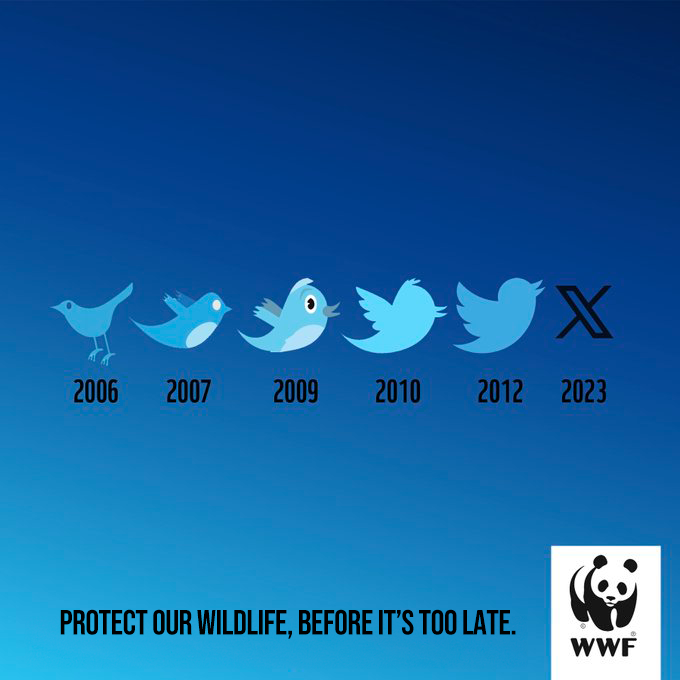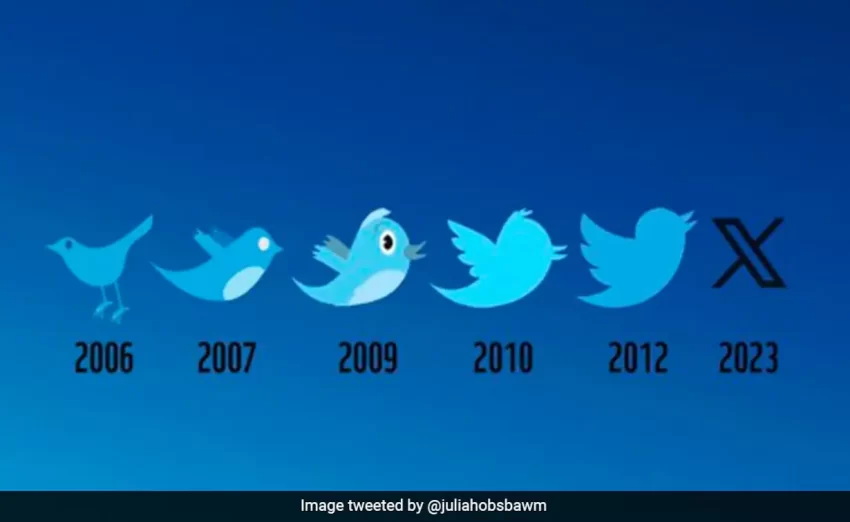The recent rebranding of Twitter has sparked controversy and commentary across social media. Elon Musk, Twitter’s new owner, suggested replacing the familiar blue bird logo with an “X”, prompting the company to launch a new boxy logo design.
The World Wide Fund for Nature (WWF) Germany quickly capitalized on this moment of change for Twitter by releasing an impactful graphic that highlighted the growing threat of wildlife extinction.
The graphic, created by McCann Germany and shared on LinkedIn, tracked the evolution of Twitter’s blue bird logo over the years alongside the declining populations of different animal groups.

The graphic’s message was clear – without action, many animal species could disappear forever, joining the long list of species already lost to extinction.
The WWF Germany campaign quickly went viral, racking up hundreds of thousands of views and thousands of shares. Online audiences praised the initiative for its creative approach and powerful message.
The graphic illustrates how even the smallest design change can represent something much greater – the relentless march of extinction threatening countless animals.
The campaign also prompted discussions about the role of marketing in inciting social change. Many commenters applauded WWF Germany for using marketing’s ability to spread ideas and influence opinions in the service of a worthy cause – wildlife conservation.
They highlighted how the right strategy can transform marketing into a potent tool for protecting our planet and inspiring positive action.
For WWF Germany, the goal was to leverage the viral moment of Twitter’s rebranding to raise awareness about the urgent threats facing wildlife.
By mapping the shrinking animal populations against Twitter’s evolving logos, the simple graphic transformed a corporate design shift into a stark metaphor for endangered species confronting potential oblivion.
The campaign’s creativity, focus on solutions over distress, and ability to spread widely across digital platforms allowed it to meaningfully move and motivate online audiences.
In all, the WWF Germany campaign demonstrates how social media marketing can be harnessed for good, leaving an enduring impact beyond the aim of promoting a product or brand. When used to champion essential causes that resonate deeply with people, like protecting our planet’s biodiversity, marketing can inspire individuals to collectively take action before it’s too late. With creativity, focus and the right message, even the smallest marketing initiative can make a large difference for wildlife – and for our world.
Source: Economic Times
Read more:
- Best Before Opens New Centurion Store, Challenging Pick n Pay and Checkers with Low Prices
- Local Shops Outpaced Supermarkets as Consumers Flocked to Spazas and Taverns
- Mirinda Welcomes Red Apple and Raspberry to the Family
- Kroger to close dozens of unprofitable stores in strategic restructuring
- Vendors defy ban on second-hand goods as government pushes formalization





